|
Welcome to
the quarterly newsletter of USDA Rural Development in Oregon. Here, you will
find updates on funding opportunities and program activities through Business, Cooperative, Energy, Electric, Telecommunications, Water and Environmental, Community Facilities, Multi-Family Housing, and Single Family Housing programs.
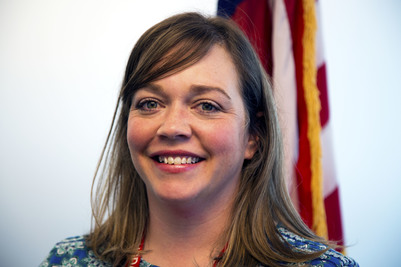 Rural Development is happy to announce the selection of Rachel Reister as our new Business and Cooperative Programs Director in Oregon.
Rachel has been with Rural Development for more than 15 years. She has a diverse background grained through working in multiple programs at the agency. Rachel began with Rural Development in Oklahoma, where she served as a Single Family Housing Technician, and then as a Business and Cooperative Programs Specialist. In 2010, she took a job with Rural Development in Oregon as a Community Programs Specialist, and most recently served as a Single Family Housing Specialist.
Rachel has a background in commercial lending from her work in the private sector. She served as a commercial loan officer for Northwest Farm Credit Services (NWFCS), the third largest farm credit cooperative in the U.S. She then worked as the Commercial Lending Team Lead for NWFCS in Chehalis, Washington. She also spent a year in the special assets division working with troubled credit.
In her spare time, Rachel works with her husband on the family farm in Washougal, Washington, and is the mother of two young children.
Contact a local Business and Cooperative Programs staff member in Oregon today to learn more about program requirements, the application process, or to discuss a potential project. Please note that the primary contact for each program has recently changed.
 Creating one-of-a-kind bags and accessories from locally sourced materials started as a hobby for Lindsey Phillips. Gradually, she began selling her products through third-party sites. Then she created her own website and sold wholesale to local boutiques. Her handcrafted products were popular, but Phillips still had a day job to pay her bills.
When the Regional Accelerator and Innovation Network (RAIN) offered a 12-week bootcamp for entrepreneurs in her home town of Florence on the Oregon coast, Phillips decided to participate so she could learn how to make her hobby into a full-time business.
The RAIN Pre-Accelerator Program was supported by a $40,000 grant from USDA’s Rural Business Development Grant Program, and included $13,000 in Strategic Economic and Community Development funding, which gives priority to projects that promote regional economic development plans. The course provided an intensive learning environment. In three months, Phillips gained new expertise in marketing, financial management, business models, and other essential tools.
After showcasing her business in front of 120 people at her graduation, Phillips took the next step to grow her startup, a step that had seemed an impossibility just months earlier. She quit her day job. “Without RAIN, I would never have had the confidence to make the leap and take my business full-time,” said Phillips.
Over the next quarter, Meant Manufacturing saw more sales than in all of the prior year. In fact, her business was so successful, Phillips found herself unable to keep up with demand. She hired her first employee just two months later, and now has the equivalent of three full-time positions during the holiday season. Learn more online…
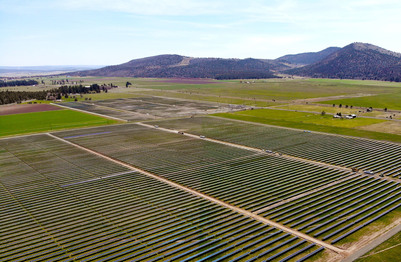 A farm in the very small community of Dairy in southern Oregon had a parcel of high elevation land that was hardly worth the effort to plant. The low soil quality and poor irrigation meant the field could only be used for hay production, and more often was left fallow. Today, that farm is earning more money from its undesirable field while also benefiting the local community.
A developer leased the plateau-like field and installed a $23 million solar energy production facility. The electricity is sold to the local utility, helping it meet the state’s renewable energy standards, increasing resiliency by incorporating backup energy sources, and providing local residents and businesses with new options for environmentally-friendly power.
The up-front costs for installing a large solar array are often high, and many lenders are reluctant to consider such projects. The developer of this solar power plant was able to secure a loan from Live Oak Bank with help from USDA Rural Development, which provided a $10 million loan guarantee through its Rural Energy for America Program and a $5 million guarantee through its Business and Industry Program, helping to mitigate the risks.
The solar power facility is not only helping this small community reduce pollutants and expand their use of renewable energy, it’s also providing a boost to the local economy. The farm owner is earning more from that field with the new lease payments than he ever did when planting hay, giving him more money to spend at local stores and businesses. And the solar facility owners are now paying local taxes, enhancing the community’s resources. Learn more online…
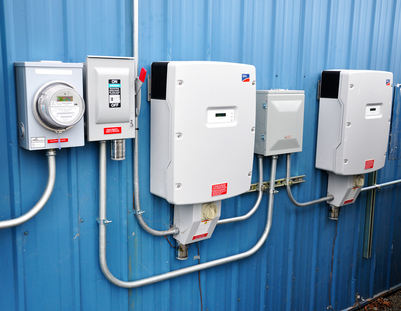 Residents and businesses in rural northeastern Oregon can now obtain financing through their local utility to make energy efficiency improvements.
The Umatilla Electric Cooperative recently received a $1.5 million, zero-interest loan from USDA Rural Development through its Rural Energy Savings Program. The consumer-owned electric cooperative will use this funding to provide approximately 250 low-interest loans for whole-house energy retrofits, heat pump installations, duct sealing, and other energy efficiency measures.
Overall, this project will help residents and businesses in the Columbia Basin and Blue Mountain areas decrease their energy use and save money on their utility bills.
 Updating infrastructure to incorporate the latest safety standards, or repairing damage after an emergency occurs, can come at a high cost, especially for rural communities with limited revenue. USDA Rural Development offers several programs that can help.
The Community Facilities loan and grant program and loan guarantee program provide financing to construct or improve essential facilities serving rural areas with a population of 20,000 or less. Improvements can include seismic retrofits, replacing unreinforced masonry, and other upgrades that will improve the safety of these public facilities in the event of an earthquake, tsunami, or other disaster. The funding can also be used to build a new facility that incorporates modern safety standards.
For example, the Depoe Bay Rural Fire Protection District received a $1.89 million loan and a $74,900 grant from USDA, as well as $831,318 from the Orgon Seismic Rehabilitation Grant Program, to renovate and make seismic improvements to Fire Station #2300. These improvements brought an aging structure up to current safety standards and will help the fire department maintain operations, even in the aftermath of an earthquake.
The Emergency Community Water Assistance Grant (ECWAG) Program can help small, rural communities with a population of 10,000 or less prepare for or recover from an emergency that threatens the availability of safe drinking water. Three communities in Oregon were recently awarded funding through this program for emergency repairs to their water systems.
During the winter of 2017, the main water distribution line in the rural town of Idanha in the Cascade Mountains ruptured. Idanha cleared snow, located the leak, and repaired the damaged pipe, ensuring drinking water remained available in this community of 134 people. Through the ECWAG Program, Rural Development awarded a $17,846 grant to cover the cost of this emergency repair.
In the rural City of Sodaville in the Willamette Valley, the aquifer level has been dropping since 2015, forcing the community at times to adopt water use restrictions and truck in water to maintain system pressure. Last month, Sodaville received a $370,525 grant to purchase a well drilled in a different aquifer. The new well will help this community of 345 people be less susceptible to drought conditions.
Low water levels in the Klamath Basin this year resulted in all but those with the most senior water rights losing groundwater access. The Bly Water and Sanitary District has been operating under a temporary human consumption use rule, which gives preference to human water needs. With a $1 million grant from Rural Development, the district will drill a new well in an area that should not be impacted by future shut-off orders, ensuring continued access to drinking water for this rural community of 278 people.
 The United States is experiencing an epidemic of drug overdose deaths, the majority of which involve an opioid. While no corner of the country has gone untouched by this crisis, the opioid epidemic has hit rural America particularly hard. USDA Rural Development can help finance the purchase, construction, or improvement of facilities and the purchase of equipment to help address this devastating issue.
The Community Facilities loan and grant program or loan guarantee program can provide financing for substance use disorder-related needs, including clinics and treatment facilities, mental healthcare facilities, crisis prevention facilities, transitional housing, and prescription drug take back programs in rural communities with a population of 20,000 or less.
Public bodies, nonprofits, and federally-recognized tribes are eligible to apply. Applications are accepted year-round.
If your community would like to invest in expanded prevention, treatment, or recovery capacity, contact a local Community Programs Specialist today to discuss your project concept and to learn more about the application process.
The staff who work at apartments funded by Rural Development’s Multi-Family Housing programs guarantee the success of these rental properties. They make sure day-to-day operations go smoothly and help to provide a welcoming environment for the residents. Often, they also invest a great deal of their own time in providing tenants with a safe and cohesive community.
They deserve recognition for their hard work, which is why Rural Development collected nominations from across Oregon. The awards were presented at the Oregon Affordable Housing Management Association 2018 Annual Conference in Bend.
We are proud to announce that Warren Blanchard with Guardian Real Estate Services was selected as the Site Manager of the Year. Blanchard received this award for his service, dedication, and caring for the tenants of Jandina Park and Willamette Place Apartments in McMinnville.
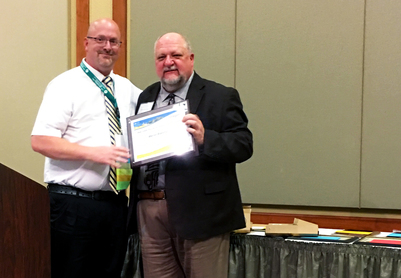 Congratulations to Brad Jordan with Viridian Management, who was nominated the Maintenance Person of the Year. He received this award for his exceptional maintenance of the Malheur Village Apartments in Vale.
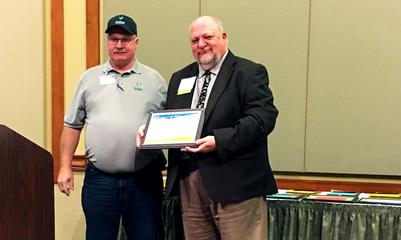 And we could not conclude without recognizing Diana Teran with the Housing Authority of Malheur and Harney counties for her 19 years of dedication and hard work at the Ria Vista Apartments in Nyssa. Diana was presented with a USDA Certificate of Appreciation.
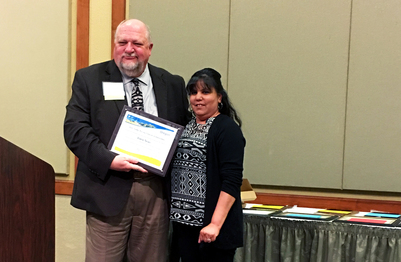
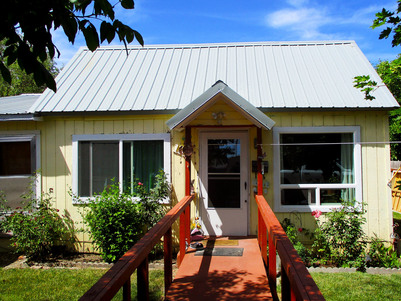 Maria no longer felt safe in her own home, where she lives with her daughter in rural Malheur County in eastern Oregon. Wind blew in through the cracks around the windows, and water leaked through the roof. But with her low monthly income, Maria could not afford repairs. She was stressed, unsure what to do, and imagined the house falling apart around them while they slept.
A friend suggested they talk to Community in Action, and Maria learned she qualified for assistance from the nonprofit, which had recently received a Housing Preservation Grant from USDA Rural Development to expand their program to help low-income residents make critical home repairs.
With this financial assistance, Maria was able to replace her windows and install a new roof. When, midway through construction, the home’s sewer system failed, Community in Action stepped in and repaired the plumbing as well, still at no cost to the homeowner.
“Without the USDA program, I don’t know what we would have done,” said Maria. “And Community in Action was great to work with.”
Maria and her daughter now feel safe in their own home. And the repairs are even saving them money. With the new windows providing improved weatherization, their energy bill was significantly lower this past winter. Learn more online…
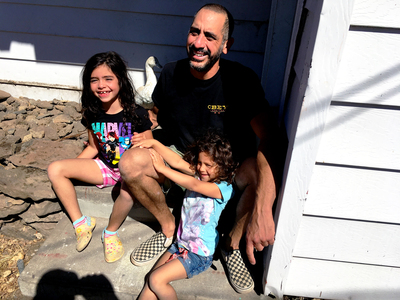 Matt, a single father of two girls, was fortunate to have a rental in Redmond’s competitive market in central Oregon, where the vacancy rate is around one percent. But the scarcity of available homes is driving up prices, and he was feeling the impact. Matt has spent years working as a subcontractor in the home construction industry, where he sets tile, sometimes working on multi-million dollar homes, but he had never owned a place of his own.
Matt heard that USDA Rural Development’s Single Family Housing Program can help people in rural communities buy a home when they are unable to qualify for a traditional bank loan. He applied and was approved for a low-interest loan with no down payment.
Matt eventually found a two-bedroom house for sale in the same neighborhood as his rental, and his offer was accepted. “This USDA program got us a house,” said Matt. “To write a mortgage check felt so good because I’m finally building ownership. Before, I felt like I was just throwing that money away.” Matt is even saving money now. His mortgage payments are about $100 less than what he was paying for rent each month.
His daughters are excited about the new house, too, and Matt is thrilled to be giving them a more permanent sense of home. Learn more online…
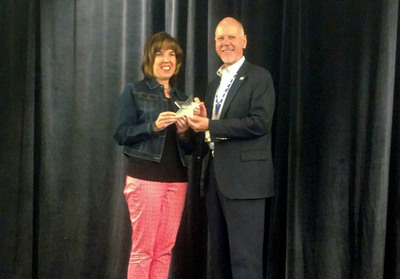 USDA Rural Development in Oregon was recently recognized by Assistant to the Secretary for Rural Development, Anne Hazlett, for our dedicated efforts to help rural communities prosper and thrive.
Hazlett presented Oregon State Director John Huffman with an Infrastructure, Partnership, and Innovation Star Award in recognition of his efforts to develop a system of support for very small rural and frontier communities in the state.
|